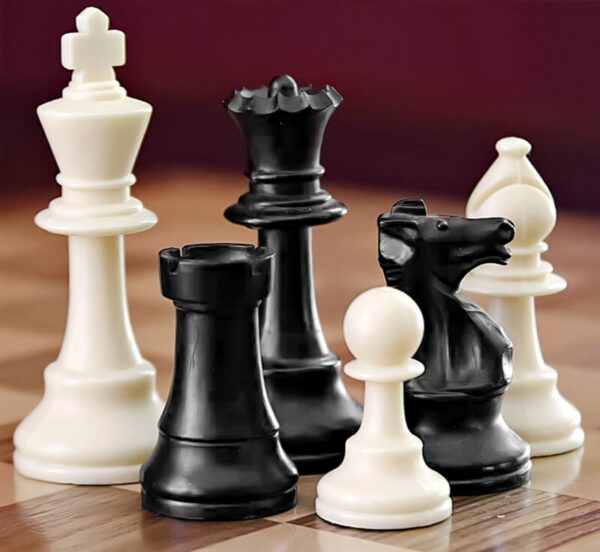Written By: Zarmeen Shujat- VI C
Chess is a strategic board game played between two players on a checkerboard with 64 squares arranged in an 8×8 grid. It is one of the oldest and most popular games in the world, enjoyed by millions of people of all ages and skill levels. In chess, each player begins with sixteen pieces: one king, one queen, two rooks, two knights, two bishops, and eight pawns. The main goal of the game is to checkmate the opponent’s king. This means putting the opponent’s king in a position where it can be captured and not move to safety. Chess is an ancient game with origins dating back over 1500 years. Its exact origins are not entirely clear, but it is believed to have originated in India around the 6th century AD before spreading to Persia, and eventually to Europe and the rest of the world.
EACH PIECE HAS ITS OWN RULE:
- The king can move one square in any direction.
- The queen can move any number of squares in a straight line horizontally, vertically, or diagonally.
- Rooks can move any number of squares horizontally or vertically.
- Knights move in an L-shape, either two squares horizontally and one square vertically, or one square horizontally and two squares vertically. They are the only pieces that can “jump” over other pieces.
- Bishops move any number of squares diagonally.
- Pawns move forward one square, but they have the option to move two squares on their first move. Pawns capture diagonally.
THE TECHNIQUES OF CHESS
Chess is a game that demands careful thought and strategic planning. Anticipating your opponent’s moves and crafting your own strategy accordingly is essential. It’s akin to a mental workout, requiring focus, mental arithmetic, and problem-solving skills.
Mastering the basics is crucial. Learn the movements of each chess piece, starting with the opening. Typically, begin by advancing a pawn in front of either the king or queen two squares forward. Then, develop your knights and bishops to strategic positions.
Vigilance is key; always watch your back and avoid wasting time on futile moves. As the game progresses into the middlegame, be proactive in your attacks.
To elevate your skills, delve into opening principles and grasp the significance of each piece. Practice recognizing tactical maneuvers such as forks and pins. Strike a balance between your overall strategy and tactical maneuvers. In the endgame, prioritize activating your king and utilizing your pawns effectively.
Fortunately, abundant resources exist both online and in literature to aid in honing your chess proficiency.
MY OPINION OF CHESS
Chess isn’t merely a pastime for me; it’s a profound passion. It’s a journey filled with strategic intricacies, tactical finesse, and boundless potential. The exhilaration of outsmarting my adversary, the gratification of executing meticulously planned combinations, and the sheer delight of immersing myself in the elegant complexities of each move – these are the reasons why I hold chess in such high regard. It transcends mere recreation; it’s a lifelong devotion to the majestic art of the game.
